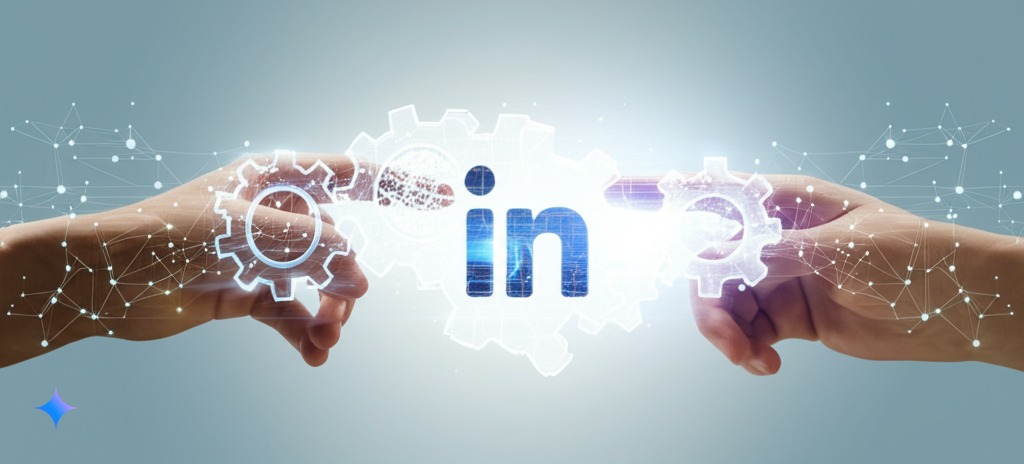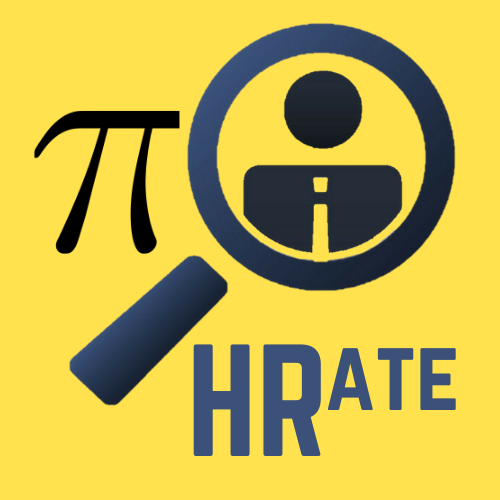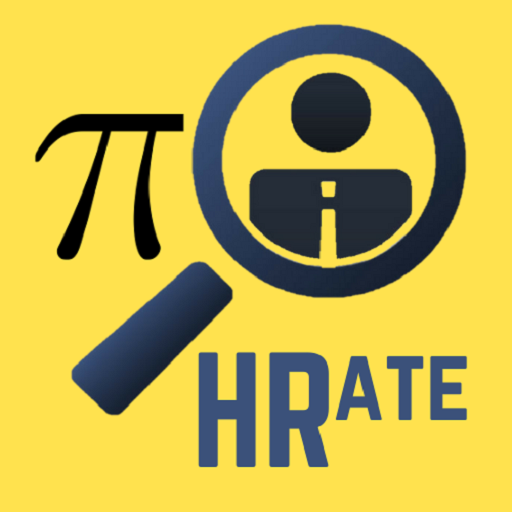LinkedIn: From Digital Rolodex to AI-Powered HR Ecosystem – A 20-Year Transformation and the Future of Work

LinkedIn’s journey from a simple online networking platform launched in a living room to a global powerhouse transforming the landscape of human resources is a testament to the power of connection and the relentless march of technology. What began as a digital “Rolodex of business” has evolved into a sophisticated ecosystem powered by data, algorithms, and, increasingly, artificial intelligence. This article explores that two-decade transformation, highlighting the key milestones, the impact on HR practices, and, most importantly, LinkedIn’s ambitious vision for an AI-driven future that promises to reshape how we work, learn, and build careers.
The Early Days: Building Trust and Authenticity in a Digital World
In the early 2000s, the internet was still finding its footing as a tool for professional connection. While social networks like Friendster were gaining traction, they lacked a focus on the professional sphere and, crucially, often lacked a commitment to authentic identities. Reid Hoffman and his co-founders recognized this gap. LinkedIn, launched in 2003, was built on a foundational principle: authenticity. Users were required to use their real names and professional identities, creating a level of trust that was absent in other online spaces.
This seemingly simple decision was revolutionary. It positioned LinkedIn not as just another social network, but as a digital representation of the real-world professional network. The early profile design, as emphasized by Hari Srinivasan (now VP of Product), mirrored the dynamics of a face-to-face meeting: name pronunciation, common connections, and a summary of professional experience. This focus on mirroring real-world interactions built a foundation of trust, making professionals comfortable sharing their career information and engaging with others.
The Recruitment Revolution: From Passive to Proactive Talent Acquisition
The initial value proposition of LinkedIn was clear: it allowed professionals to connect, maintain their network, and share career updates. However, its true disruptive power emerged as recruiters began to recognize its potential. LinkedIn offered something that traditional job boards and classified ads couldn’t: access to passive candidates. These were individuals who weren’t actively looking for a job but possessed the skills and experience that companies desperately needed.
The launch of LinkedIn Recruiter in 2008 was a watershed moment. It provided recruiters with a powerful set of tools to search for candidates based on specific criteria, personalize their outreach, and build talent pipelines. This shifted the recruitment paradigm from a reactive model (waiting for applications) to a proactive one (actively seeking out the best talent).
The impact was profound:
- Direct Sourcing: Recruiters could bypass traditional channels and directly contact potential candidates, significantly expanding their reach.
- Skills-Based Search: LinkedIn’s emphasis on skills, rather than just job titles, allowed recruiters to identify candidates with the specific capabilities needed for a role, even if their previous job titles didn’t perfectly match.
- Employer Branding: Companies began to leverage LinkedIn to showcase their culture, values, and employee experiences, attracting talent through a more holistic approach. Company pages became vital tools for communicating employer value propositions.
- Data-Driven Insights: LinkedIn provided data and analytics on talent pools, hiring trends, and competitor activity, enabling recruiters to make more informed decisions.
LinkedIn’s growth mirrored its impact. It became the first major US social media company to go public in 2011, a testament to its value and the rapidly changing landscape of talent acquisition. The platform’s user base exploded, reaching hundreds of millions and eventually surpassing one billion, solidifying its position as the dominant professional network.
Beyond Recruitment: The Rise of LinkedIn Learning and the Skills-Based Economy
LinkedIn’s acquisition of Lynda.com in 2015, and the subsequent launch of LinkedIn Learning, marked a crucial expansion beyond its core recruitment focus. This move signaled LinkedIn’s ambition to become a central hub for professional development and lifelong learning, directly addressing the growing skills gap in the modern workforce.
LinkedIn Learning offered several key advantages:
- Vast Course Library: Access to a massive library of online courses covering a wide range of skills, from technical expertise to soft skills.
- Personalized Recommendations: Leveraging its data on user profiles and career trajectories, LinkedIn Learning could recommend courses tailored to individual needs and goals.
- Integration with Profiles: Learners could showcase their completed courses and acquired skills directly on their LinkedIn profiles, making their learning visible to potential employers.
- Addressing the Skills Gap: LinkedIn Learning directly addressed the growing need for continuous learning and upskilling in a rapidly changing job market.
This move was strategically aligned with a broader shift towards skills-based hiring. As automation and technological advancements reshaped industries, traditional job titles became less reliable indicators of a candidate’s capabilities. LinkedIn, with its focus on skills and its learning platform, was perfectly positioned to facilitate this transition. The company actively promoted the idea that skills, not just experience or degrees, were the key currency of the future workforce.
The AI Inflection Point: Reimagining HR with Intelligent Automation
The rise of artificial intelligence represents the next major inflection point in LinkedIn’s evolution. AI is not just an incremental improvement; it’s a fundamental shift that promises to reimagine how HR functions, from recruitment and onboarding to learning and development.
LinkedIn’s vision for an AI-powered future is ambitious and multifaceted:
- AI-Powered Matching (Beyond Keywords): LinkedIn is moving beyond simple keyword matching to develop algorithms that understand the nuances of skills, experience, and career trajectories. This means matching candidates with roles based on a deeper understanding of their potential, even if their previous experience doesn’t perfectly align with the job description. This includes predicting which candidates are most likely to succeed in a given role.
- Automated Screening and Candidate Evaluation: AI can automate the tedious process of screening applications, identifying the most promising candidates based on a range of criteria, freeing up recruiters to focus on higher-value tasks.
- Personalized Learning Journeys: AI can curate personalized learning paths for employees, recommending courses and resources based on their skills gaps, career goals, and the evolving needs of their organization.
- Bias Mitigation: One of the most critical applications of AI in HR is in identifying and mitigating bias in the hiring process. LinkedIn is actively working on algorithms that can detect and correct for biases related to gender, race, and other factors, promoting a more equitable and inclusive workforce.
- Conversational AI and Chatbots: AI-powered assistants can handle routine tasks like scheduling interviews, answering candidate questions, and providing onboarding support, improving the overall candidate experience.
- Predictive Analytics: AI can forecast future talent needs, identify potential attrition risks, and provide insights into compensation trends, enabling companies to be more proactive in their talent management strategies.
- Talent Intelligence: Deeper insights into the talent market, competitor analysis, and compensation trends, giving companies a strategic advantage.
The New Job Search Tool: A Glimpse into the Future
The HR Brew article highlights a particularly exciting development: LinkedIn’s new job search tool, powered by its own large language model (LLM). This tool represents a significant departure from traditional job search methods. Instead of relying on keywords and job titles, it allows users to input their broader career aspirations, values, and goals. The LLM then analyzes this input and generates a set of opportunities that might not have been apparent through a traditional search.
This tool embodies LinkedIn’s vision of a more personalized and proactive approach to career development. It’s not just about finding a job; it’s about finding the right opportunity, one that aligns with an individual’s long-term aspirations and potential.
The Human Element Remains Central
Despite the increasing reliance on AI, LinkedIn emphasizes that the human element remains central to its mission. The goal is not to replace human recruiters or HR professionals, but to empower them with tools that make them more efficient and effective. AI is seen as a way to automate tedious tasks, freeing up time for higher-value interactions, such as building relationships with candidates, assessing cultural fit, and ensuring a smooth onboarding process.
This is a crucial point. The success of AI in HR depends on striking the right balance between automation and human judgment. AI can provide data-driven insights and streamline processes, but it cannot replace the empathy, intuition, and critical thinking that are essential for making sound hiring decisions and fostering a positive work environment.
Challenges and Considerations
While the potential of AI in HR is immense, there are also significant challenges and considerations:
- Data Privacy and Security: LinkedIn holds a vast amount of sensitive personal and professional data. Ensuring the privacy and security of this data is paramount, especially as AI algorithms become more sophisticated and data-driven.
- Algorithmic Bias: As mentioned earlier, mitigating bias in AI algorithms is a critical challenge. Careful design and ongoing monitoring are necessary to ensure that AI tools do not perpetuate or amplify existing inequalities.
- Transparency and Explainability: It’s important for users to understand how AI algorithms are making decisions, particularly in areas like candidate selection and learning recommendations. Transparency and explainability are crucial for building trust and ensuring accountability.
- The Skills Gap in AI: The widespread adoption of AI in HR will require a new set of skills, both for HR professionals and for the workforce as a whole. Companies will need to invest in training and development to ensure that their employees have the skills needed to leverage AI effectively.
- Ethical Implications: Ensuring fairness, avoiding discrimination, and maintaining human oversight are critical.
The Future of Work: A Collaborative Ecosystem
LinkedIn’s journey reflects a broader transformation in the world of work. The traditional employer-employee relationship is evolving, with a greater emphasis on skills, continuous learning, and individual agency. LinkedIn envisions itself as a central hub in this evolving ecosystem, connecting individuals with opportunities, learning resources, and a network of professionals.
The company’s AI-powered future is not just about technology; it’s about creating a more equitable, efficient, and fulfilling work experience for everyone. It’s about empowering individuals to take control of their careers, acquire the skills they need to thrive, and connect with organizations that align with their values and aspirations.
LinkedIn’s story is a powerful example of how a simple idea – connecting professionals – can evolve into a force that reshapes an entire industry. The company’s continued commitment to innovation, its focus on the human element, and its ambitious vision for an AI-powered future position it as a key player in shaping the future of work for years to come. The platform’s continued success will depend on its ability to navigate the challenges of AI, prioritize ethical considerations, and maintain its core value proposition: fostering meaningful connections in a rapidly changing world. The platform’s vision is not merely to be a job board or a learning platform, but a comprehensive ecosystem that supports the entire employee lifecycle, from initial recruitment to ongoing development and career advancement. This ecosystem will be increasingly driven by AI, but always with the goal of enhancing, not replacing, the human connection that remains at the heart of the professional world.



